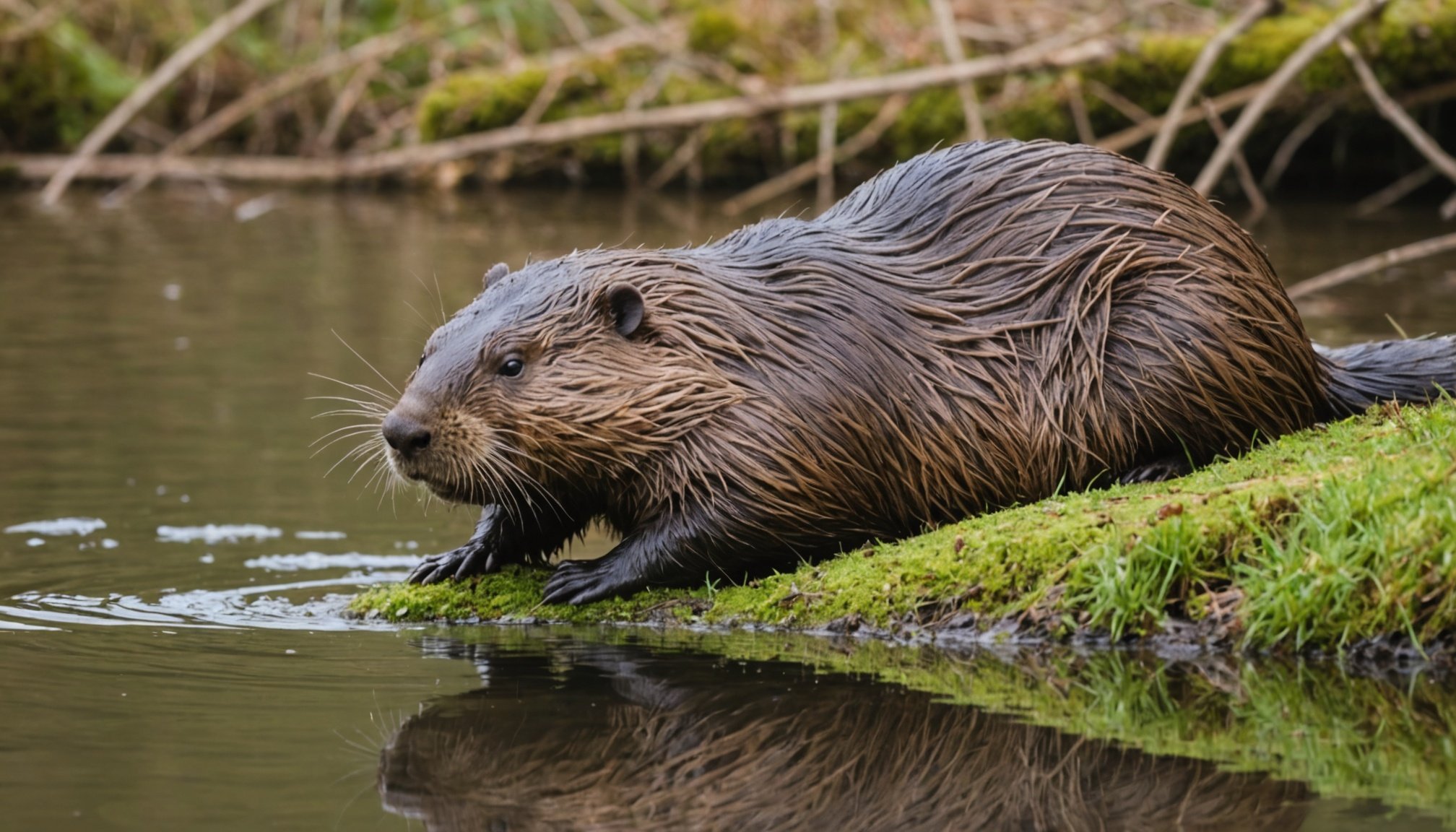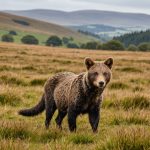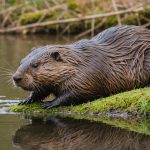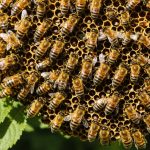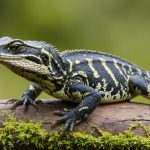Overview of Beaver Reintroduction in the UK
The beaver reintroduction in the UK marks a significant step in restoring UK river ecosystems. Beavers, which were once native, had been extinct in the UK due to hunting and habitat loss. Recent conservation efforts have shifted towards bringing these industrious creatures back, recognising their ecological impact.
Historically, beavers played a crucial role in shaping landscapes, creating wetlands that support a diverse range of wildlife. Their absence led to a decline in habitat quality and biodiversity in the UK’s riverine environments. However, initiatives and policies are now in place to support their return. Organisations and government bodies have recognised that beavers are essential for ecosystem management. They construct dams that slow water flow, reduce erosion, and aid flood prevention, ultimately benefiting both wildlife and human communities.
A lire en complément : Fostering biodiversity: innovative approaches to wildlife conservation in uk urban housing developments
Moreover, the reintroduction projects are supported by robust scientific research, ensuring that their ecological impact is monitored and managed. The growing awareness of their contributions underpins the commitment to integrating beavers into environmental management strategies. As these efforts continue, the hope is to see thriving beaver populations once more, fostering healthier and more resilient ecosystems across the UK.
Ecological Impacts on River Habitats
Rivers, like veins of our living planet, are crucial for sustaining diverse ecosystems. Human activity, however, often disrupts their natural balance. River habitat restoration strives to repair these ecosystems by addressing two major factors: water flow changes and sediment deposition. These factors are fundamental to wetlands formation and the enhancement of floodplain habitats, playing a critical role in ecological health.
Sujet a lire : Essential guidelines for uk outdoor enthusiasts: how to protect wildlife while savoring nature
But how exactly do these changes affect biodiversity? When water flow is altered, it transforms how sediment is deposited, which can either nourish or suffocate local flora and fauna. An even distribution can lead to the formation of rich wetlands, enhancing conditions for a variety of species. Wetlands and restored floodplains serve as biodiverse hubs, increasing plant and animal species diversity through natural habitats with abundant resources.
The goal is to strike a balance that allows species to thrive in their natural habitat. Thus, when you think about river habitat restoration, consider the delicate dance of water and earth. It’s this complex relationship that ultimately enriches biodiversity, revitalizing ecosystems to function cohesively and support a multitude of life forms.
Case Studies of Successful Reintroduction
Exploring various beaver case studies, their conservation efforts, and the subsequent ecological outcomes offers invaluable insights into wildlife reintroduction programs.
Example of the River Otter, Devon
In the River Otter region of Devon, the reintroduction process began cautiously. Carefully monitored projects aimed to assess the ecological transformations that beavers could stimulate. Over time, the landscape transformed dramatically. Riversides reshaped, forming new wetland areas that enriched local biodiversity. Species previously scarce or absent made impressive returns. Local communities initially expressed a mix of skepticism and support. However, ongoing community involvement gradually tipped towards enthusiasm. Residents noted tangible benefits, such as increased fish populations and flood management improvements.
Impact on the River Tay, Scotland
The River Tay project in Scotland further exemplifies the potential of beaver integration. Studies focused extensively on monitoring habitat changes. The outcome was clear: the presence of beavers prompted the return of specific species, significantly boosting biodiversity. Despite facing challenges like managing the impact on farmland and navigating human-wildlife conflict, the project yielded important lessons. It highlighted the necessity of adaptive strategies in conservation efforts, proving vital for successful reintroduction processes.
These case studies underscore beavers’ ability to foster positive ecological outcomes and transform landscapes, though also illuminating potential challenges.
Biodiversity Benefits Linked to Beaver Activity
Beavers play a pivotal role in biodiversity enhancement, acting as natural architects of ecosystems. Their activities, such as building dams and creating wetlands, significantly modify habitats, promoting a myriad of species interactions. By forming ponds and wetlands, beavers foster ideal conditions for various aquatic and terrestrial species, offering thriving spaces for fish, amphibians, birds, and plants.
For example, species such as the wood duck and moose benefit immensely from beaver-modified habitats, relying on these enriched environments for food, shelter, and breeding. Beaver ponds support fish species like brook trout and increase habitat complexity, which leads to improved spawning sites.
These modifications have long-term implications for ecosystem resilience. By creating diverse habitats, beavers enhance ecosystem services like flood mitigation, water purification, and carbon sequestration. The increased habitat diversity also acts as a buffer against environmental changes, supporting robust and flexible ecosystems.
Ultimately, the species interactions facilitated by beaver activity are crucial in maintaining the balance and health of ecosystems. These small but mighty ecosystem engineers are invaluable for their ability to transform landscapes, nurturing biodiversity and promoting ecological sustainability.
Challenges and Considerations of Beaver Reintroduction
Introducing beavers back into their natural habitats poses significant ecological challenges. One major issue is the potential for conflicts with agricultural and forestry practices. Beavers are known for building dams that can cause flooding, affecting crop production and timber harvests. For farmers and foresters, this represents a significant concern that needs addressing.
Beaver management involves strategies to mitigate human-wildlife interactions. For example, implementing water flow devices can help manage water levels around dams, reducing flood risks while allowing beavers to thrive.
Another key challenge is the human-wildlife conflict. Steps must be taken to ensure that beaver activity does not lead to excessive property damage. This involves creating buffer zones and establishing guidelines for mitigating beaver-related issues.
The significance of stakeholder engagement and education cannot be overstated. Educating communities about the ecological benefits of beavers and addressing their concerns helps foster a cooperative environment. This ensures that the reintroduction process considers all interests involved, promoting a sustainable coexistence.
Each strategy in the reintroduction process highlights the delicate balance between humans and nature, aiming for a harmonious outcome that respects both ecological and human needs.
Future of Beaver Reintroduction in the UK
The prospects for expanding reintroduction initiatives of beaver populations in the UK are promising yet complex. Essential for this expansion are well-thought-out conservation strategies and robust policy frameworks. Our ability to successfully extend these initiatives hinges on clear guidelines that address ecological balance and human-wildlife coexistence.
Current ecological innovation suggests that beavers significantly contribute to improving biodiversity. However, the lack of structured policies can impede progress. Policymakers must create specific parameters to ensure sustainable growth and prevent environmental disruption.
Another vital component in the long-term success of reintroduction projects is securing diverse funding sources. Funding is crucial for research, management, and the monitoring of beaver populations. Incorporating public and private investments can offer a steady financial base for these ambitious projects.
The role of research and monitoring cannot be understated. Constant evaluation allows for adjustments in conservation strategies, ensuring they remain effective over time. This involves understanding beaver behaviour, habitat requirements, and their impact on ecosystems. Without this knowledge, the success of reintroduction efforts could be compromised.
In conclusion, expanding beaver reintroduction in the UK requires a comprehensive approach involving policies, funding, and continuous research, so that ecological benefits are sustained well into the future.



